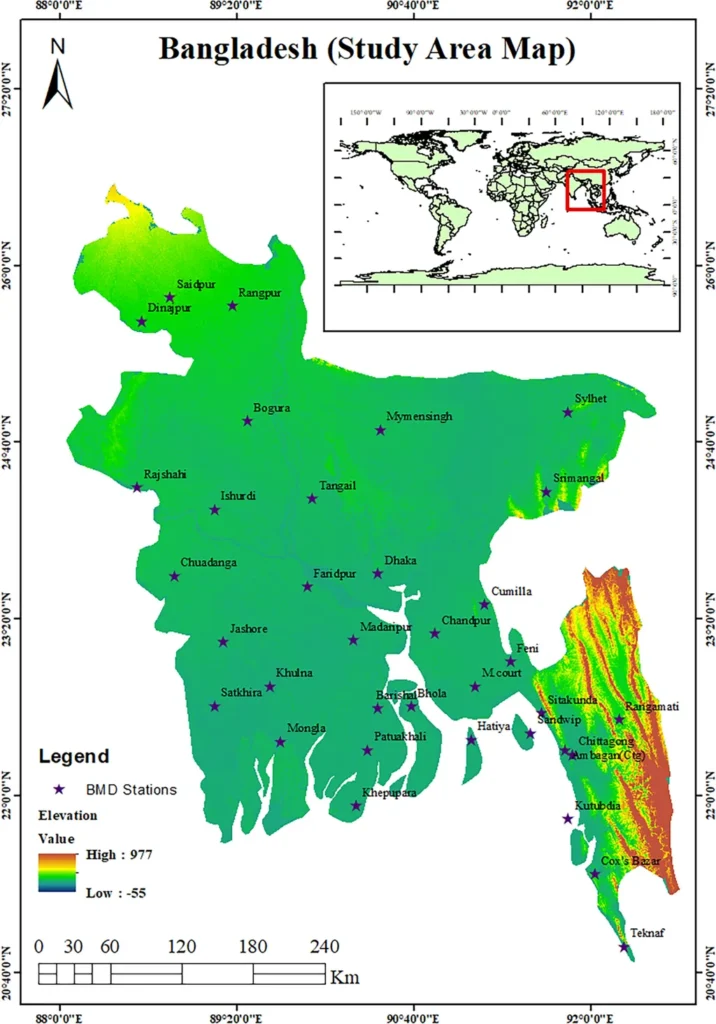In the heart of Bangladesh, where the rhythm of life is often dictated by the whims of the monsoon, a groundbreaking study is offering new hope for predicting and mitigating the devastating impacts of droughts. Led by Md. Alomgir Hossain from the Department of Computer Science and Engineering, this research is not just about understanding the past but also about shaping a more resilient future for the region’s agriculture and energy sectors.
The study, published in the journal ‘Advances in Meteorology’ (translated as ‘Advances in Weather Science’), focuses on the central region of Bangladesh, an area particularly vulnerable to prolonged periods of reduced rainfall. By harnessing the power of machine learning (ML) algorithms and statistical models, Hossain and his team have developed a robust framework for drought analysis and forecasting.
At the core of this research lies an ensemble learning approach that combines the strengths of multiple ML algorithms. “We utilized meteorological data from seven stations across central Bangladesh to compute various drought indices,” explains Hossain. “Our goal was to evaluate the accuracy of these algorithms in predicting meteorological droughts, which are characterized by significant reductions in rainfall.”
The team employed the standardized precipitation index (SPI), the standardized precipitation evapotranspiration index (SPEI), and the Z-score index (ZSI) to quantify drought conditions. These indices were then mapped within a geographic information system (GIS) environment to assess drought hazards and identify key social and physical vulnerability factors.
One of the standout performers in this study was the random forest (RF) model, which demonstrated exceptional accuracy in predicting SPI and SPEI. With an impressive accuracy rate of 93.8%–94.0%, precision of 90.9%–92.7%, and recall of 89.5%–92.0%, the RF model proved to be a reliable tool for drought prediction. Its error metrics, including MAE (0.055–0.068), MSE (0.0032–0.0052), RMSE (0.056–0.072), and R2 (0.914–0.965), further underscored its effectiveness.
But the innovation didn’t stop there. The researchers also integrated the autoregressive integrated moving average (ARIMA) model to predict future SPI and SPEI values for the period 2023–2030. This forward-looking approach helped identify the timing of both short-term and long-term droughts, providing invaluable insights for policymakers and stakeholders.
“The integration of ARIMA with ML algorithms significantly enhanced our forecasting accuracy,” notes Hossain. “We achieved over 92.0% accuracy in predicting SPI and SPEI, which is a game-changer for drought prediction capabilities.”
The implications of this research extend far beyond academia. For the energy sector, accurate drought forecasting is crucial for managing hydropower resources, which are heavily dependent on rainfall. By anticipating drought conditions, energy providers can better plan for water availability, ensuring a stable and reliable energy supply.
Moreover, the agricultural sector stands to benefit immensely from these advancements. Farmers can use the predictions to make informed decisions about crop selection, irrigation, and resource allocation, ultimately enhancing food security and economic stability in the region.
As we look to the future, the integration of advanced technologies like machine learning and GIS into drought analysis and forecasting holds tremendous promise. This research not only shapes our understanding of drought dynamics but also paves the way for more resilient and sustainable practices in agriculture and energy. In the words of Hossain, “This is just the beginning. The potential for these technologies to transform our approach to drought management is immense.”

